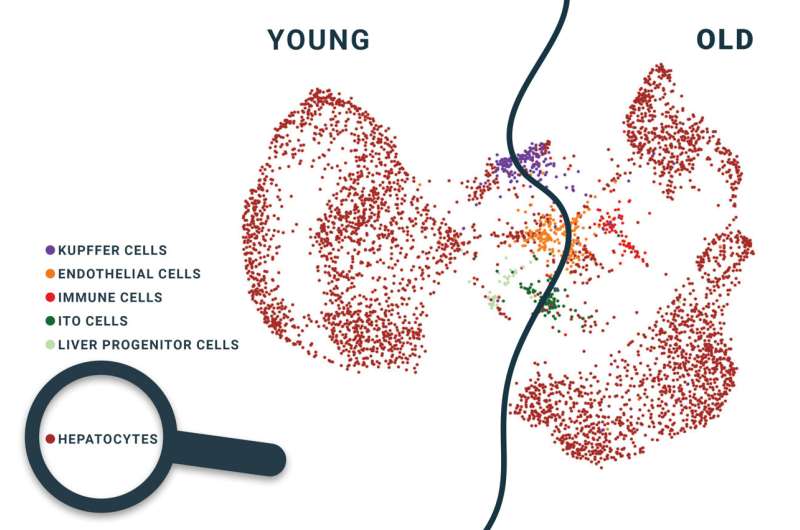This article has been reviewed according to Science X's editorial process and policies. Editors have highlighted the following attributes while ensuring the content's credibility:
fact-checked
peer-reviewed publication
trusted source
proofread
Liver cells age differently depending on where they are in the organ, study shows

Looking around us, we can see that people age at different rates. But what about inside? Do all cells age in the same way? And does the location of a cell in the organ make a difference to the aging process?
Researchers at the Max Planck Institute for Biology of Aging in Cologne and CECAD Excellence Cluster for Aging Research have now shown in the liver of mice that liver cells age differently depending on where they are located in the organ. The study is published in the journal Nature Aging.
The location of the liver cells has a strong influence on the aging process. In the region of the liver where the liver cells use oxygen for energy production in their mitochondria, this process deteriorates significantly with age. In the central, oxygen-deprived area of the liver, however, the researchers found no change in the mitochondria, but a change in the cells' fat metabolism.
"It is important where a cell ages. They age differently depending on where they are located and what their function is," says Peter Tessarz, research group leader at the Max Planck Institute for Biology of Aging and leader of the study. "For aging research, this means that we have to pay close attention to which cells we are studying and where they are located in the organ."
Same cell type—different roles
The liver is largely made up of a single type of cell, the hepatocyte. Depending on where they are in the liver, they have different roles. Near the portal vein, where fresh, oxygen-rich blood enters the liver, hepatocytes use the oxygen to process fats in their mitochondria and produce energy. In contrast, carbohydrates are broken down in the less oxygen-rich regions of the liver.
"In the liver, the position of the hepatocyte in the organ plays a crucial role. That's why the liver was the perfect model for us to investigate whether location also makes a difference in aging," explains Peter Tessarz.
The researchers analyzed liver cells from young and old mice using cutting-edge technology that allowed them not only to obtain data for almost every single cell, but also to assign it to a position in the organ. They were particularly interested in which genes were still being read in old age, how the metabolism of the cells changed and whether epigenetic changes occurred.
According to Achim Tresch, Head of the Institute for Medical Statistics and Bioinformatics at CECAD and co-author of the study, the work shows "that the bioinformatic combination of different types of data at the single-cell level provides new insights into metabolic processes."
More information: Chrysa Nikopoulou et al, Spatial and single-cell profiling of the metabolome, transcriptome and epigenome of the aging mouse liver, Nature Aging (2023). DOI: 10.1038/s43587-023-00513-y



















